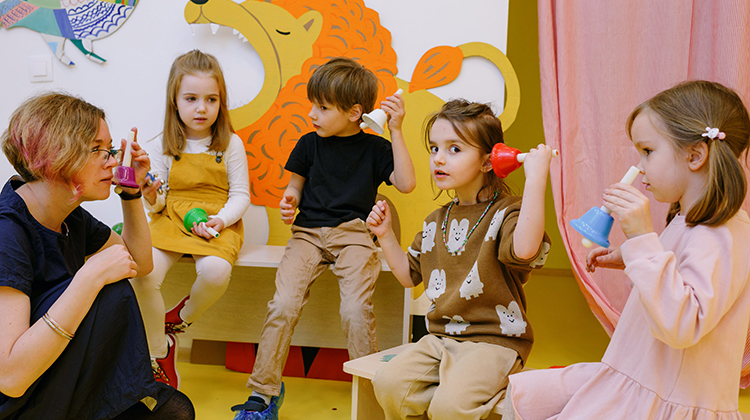Classroom Strategies for Children with Communication Difficulties

Every child should have an equal opportunity to learn and succeed in the classroom, according to inclusive education. However, this might offer special difficulties for kids who have communication issues, necessitating specialised classroom management techniques to assure their academic and social success. Various illnesses, such as speech abnormalities, language delays, or learning disabilities, might cause communication challenges. So, here are five efficient classroom techniques created especially to help students who are dealing with these difficulties. When carefully and diligently applied, these techniques can nurture all students' growth and development by providing a caring and nurturing environment.
Differentiated Instruction: Meeting Individual Needs
Differentiated education is a vital classroom strategy for students who struggle with communication. This strategy entails modifying instruction to fit students' various learning preferences and skill levels. Lessons must be modified for kids who have speech or language impairments in order to make sure they can access and comprehend the information. Teachers can accomplish this by reinforcing concepts with manipulatives, gestures, and visual aids. Additionally, giving children additional means of expression - like letting them use assistive technology or drawings - can improve their comprehension and involvement. Additionally, evaluations can be differentiated so that students can show their understanding of the most effective methods for them.
Sensory-Friendly Classroom Environment
Children who have trouble communicating may also have sensory sensitivity issues, which can interfere with their ability to learn. Their comfort and level of focus can significantly change by creating a sensory-friendly classroom atmosphere. A more inclusive environment can be achieved by reducing distractions, offering noise-cancelling headphones, employing soft lighting, and including fidget tools. Offering different seating options, such as beanbags or exercise balls, can also aid kids who learn best when they are active. The layout of the classroom can be optimized such that it meets the sensory demands of all kids by working with occupational therapists, helping to foster a happy learning environment.
Augmentative and Alternative Communication (AAC) Systems
AAC (Augmentative and Alternative Communication) technologies are crucial in developing meaningful relationships for kids who have difficulty communicating verbally. To promote expression and comprehension, AAC includes a variety of tools and tactics, including picture boards, communication applications, and sign language. Students who use AAC in the classroom are given the tools they need to communicate effectively, and their peers are also encouraged to appreciate and accept various kinds of communication. Finding the best AAC techniques for each student and educating teachers, parents, and peers can be made much easier by working together with a certified NDIS speech therapist who can help with any kind of speech problem.
Peer Support and Collaborative Learning
An efficient method for fostering social connections and communication skills in children with problems is to promote peer support and cooperative learning. Students who struggle with communication can gain confidence and develop lasting connections by being paired with understanding and sympathetic classmates. Group exercises that promote student engagement and cooperation can be used by teachers. These exercises not only foster communication but also help students develop important social skills like empathy and teamwork. In order for all children to feel valued and included, it is critical for instructors to foster an environment of acceptance and understanding in the classroom.
Building a Communication-Rich Curriculum
Children who struggle with communication can receive additional support from the curriculum when it includes activities that promote communication. To promote verbal expressiveness, incorporate exercises that emphasize role-playing, public speaking, and storytelling from kindergarten age. Give tasks more time and offer helpful criticism when it comes to written communication to improve writing abilities. A diverse literature curriculum that emphasizes characters with a range of communication styles can help encourage inclusivity and extend students' horizons. Creating a supportive and encouraging environment in the classroom can also give kids a secure location to practice and develop their communication skills without worrying about criticism or scorn.
Supporting students with communication issues in the classroom necessitates a comprehensive strategy that takes into account each student's particular requirements and difficulties. To establish an inclusive learning environment, it is crucial to employ tactics like differentiated instruction, the use of AAC systems, sensory-friendly locations, peer support, and communication-rich activities. All kids can succeed academically and socially in the classroom by implementing these tactics, regardless of their communication skills. Working together with experts can improve the assistance given to these kids even more, ensuring they get the finest education and chances to realize their full potential. Let's work together to create an environment that is more caring and inclusive for every child in the school system.
Image by Ksenia Chernaya